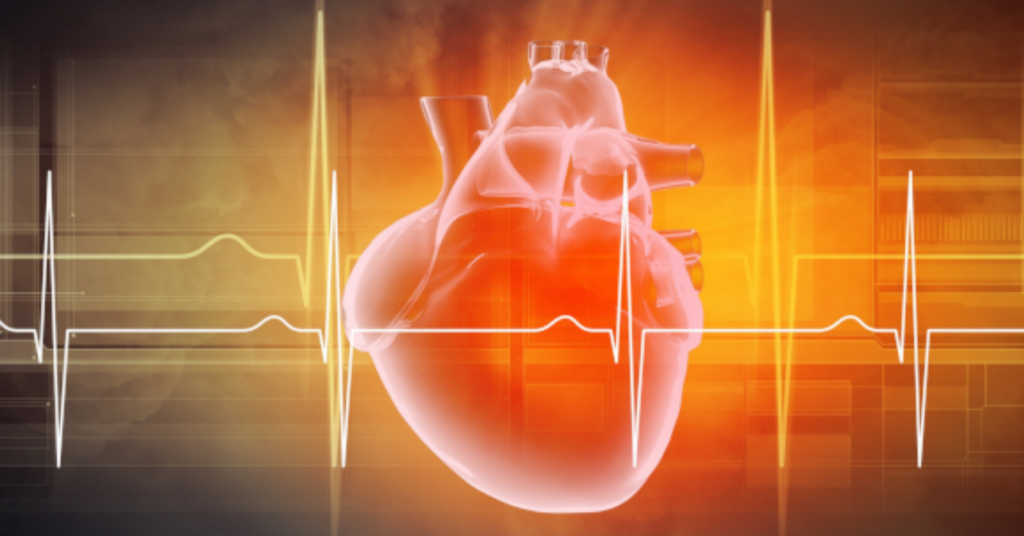Nanoplastics in Our Bloodstream: A Silent Contributor to Heart Disease
 By GreenMedInfo Research Group
By GreenMedInfo Research Group
They’re smaller than a grain of sand, but they might be causing a storm in your arteries. Dive into the world of nanoplastics, the invisible threat that might be contributing to heart disease.
In recent years, concerns have been growing over the widespread presence of plastics in the environment, particularly the emergence of nanoparticles of plastic, known as nanoplastics.1 These microscopic plastic particles, measuring less than 100 nanometers in size, have been found in various ecosystems, including oceans, freshwater bodies, and even in the air we breathe.2,3 And recent research shows that there may be as many as 240,000 nanoplastic particles in every bottle of water you purchase. While the environmental impact of plastic pollution has been well-documented, emerging research suggests that nanoplastic exposure may have profound implications for human health, including its potential link to heart disease.
New Research Highlights the Cardiovascular Risks of Nanoplastic Exposure:
A recent study, published in the journal “Journal of Hazardous Materials” (DOI: 10.1016/j.jhazmat.2024.133583)
Understanding the Study:
In this research, PS NPs with a diameter of 100 nanometers were used to simulate nanoplastic exposure. The study aimed to explore whether PS NPs exposure could lead to atherosclerosis, a cardiovascular condition characterized by the accumulation of lipids, inflammation, and oxidative stress. The researchers conducted a series of experiments both in vitro and in vivo to assess the impact of PS NPs.
Key Findings from the Study:
Accumulation of Lipids: The study found that PS NPs exposure, in combination with oxidized low-density lipoprotein (ox-LDL), induced significant lipid accumulation in macrophages, specifically RAW264.7 macrophages. This accumulation of lipids is a hallmark of atherosclerosis development.4
Atherosclerotic Plaque Formation: Using ultrasound biomicroscopy (UBM), the researchers observed the emergence of atherosclerotic plaques at the aortic arch of ApoE-/- mice after three months of exposure to PS NPs. Oil-red O and hematoxylin-eosin (H&E) staining further confirmed the deposition of lipids and plaque formation at the mice’s aortic root.4
Disturbances in Lipid Metabolism: The study indicated that the development of atherosclerotic disease in the mice was associated with disturbances in lipid metabolism and oxidative stress damage in the liver. This suggests a systemic impact of PS NPs exposure on lipid regulation and inflammation.4
Implications for Cardiovascular Health:
These findings raise significant concerns about the potential cardiovascular risks associated with nanoplastic exposure. Atherosclerosis is a cardiovascular disease closely linked to abnormal lipid metabolism, inflammation, and oxidative stress. The study suggests that PS NPs may trigger these processes, potentially contributing to the development of atherosclerosis and, by extension, heart disease.4
Future Research and Environmental Implications:
While this study provides valuable insights into the potential health risks of nanoplastic exposure, further research is needed to fully understand the mechanisms involved and establish a definitive link between nanoplastics and heart disease in humans.
These findings underscore the urgent need to address plastic pollution and reduce the release of plastic nanoparticles into the environment. The wide range of plastic applications and their persistence in the environment raise concerns about the long-term impact on human health. Efforts to minimize plastic waste, promote recycling, and develop sustainable alternatives — or better yet, net positive solutions — are essential steps in mitigating these risks.
In conclusion, the new research on PS NPs exposure and its impact on lipid metabolism and atherosclerosis in mice adds to the growing body of evidence suggesting that nanoplastic exposure may have profound implications for cardiovascular health. It highlights the importance of continued research, environmental stewardship, and proactive measures to address plastic pollution and protect human well-being.
References
1. Thompson, R.C., et al. (2004). Lost at sea: where is all the plastic? Science, 304(5672), 838.
2. Gigault, J., et al. (2018). Current opinion: What is a nanoplastic? Environmental Pollution, 235, 1030-1034.
3. Wright, S.L., et al. (2020). Atmospheric microplastic deposition in an urban environment and an evaluation of transport. Environmental Science & Technology, 54(18), 11668-11677.
4. Wen, J., et al. (2024). Long-term polystyrene nanoplastic exposure disrupts hepatic lipid metabolism and causes atherosclerosis in ApoE-/- mice. Journal of Hazardous Materials, DOI: 10.1016/j.jhazmat.2024.133583.
The GMI Research Group (GMIRG) is dedicated to investigating the most important health and environmental issues of the day. Special emphasis will be placed on environmental health. Our focused and deep research will explore the many ways in which the present condition of the human body directly reflects the true state of the ambient environment.
Disclaimer: This article is not intended to provide medical advice, diagnosis or treatment. Views expressed here do not necessarily reflect those of GreenMedInfo or its staff.
Source: GreenMedInfo
Source: https://www.naturalblaze.com/2024/04/nanoplastics-in-our-bloodstream-a-silent-contributor-to-heart-disease.html
Anyone can join.
Anyone can contribute.
Anyone can become informed about their world.
"United We Stand" Click Here To Create Your Personal Citizen Journalist Account Today, Be Sure To Invite Your Friends.
Please Help Support BeforeitsNews by trying our Natural Health Products below!
Order by Phone at 888-809-8385 or online at https://mitocopper.com M - F 9am to 5pm EST
Order by Phone at 866-388-7003 or online at https://www.herbanomic.com M - F 9am to 5pm EST
Order by Phone at 866-388-7003 or online at https://www.herbanomics.com M - F 9am to 5pm EST
Humic & Fulvic Trace Minerals Complex - Nature's most important supplement! Vivid Dreams again!
HNEX HydroNano EXtracellular Water - Improve immune system health and reduce inflammation.
Ultimate Clinical Potency Curcumin - Natural pain relief, reduce inflammation and so much more.
MitoCopper - Bioavailable Copper destroys pathogens and gives you more energy. (See Blood Video)
Oxy Powder - Natural Colon Cleanser! Cleans out toxic buildup with oxygen!
Nascent Iodine - Promotes detoxification, mental focus and thyroid health.
Smart Meter Cover - Reduces Smart Meter radiation by 96%! (See Video).






